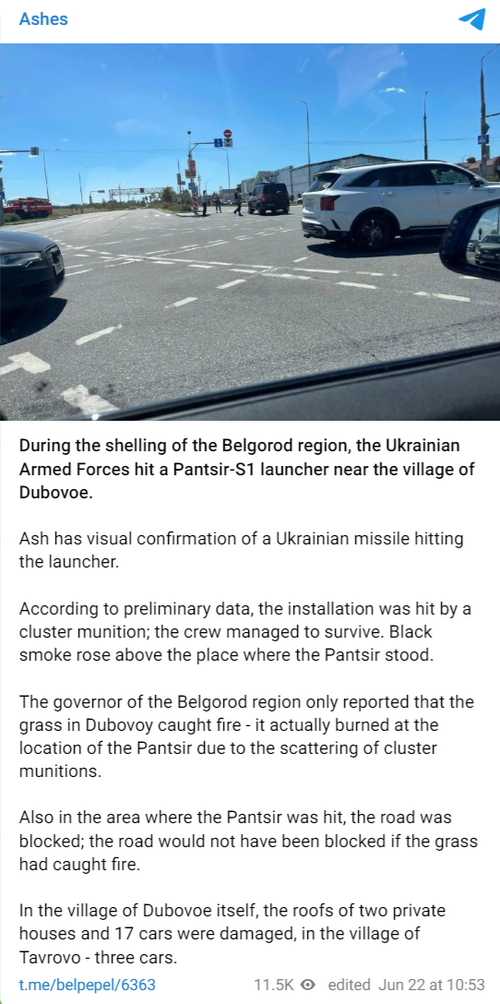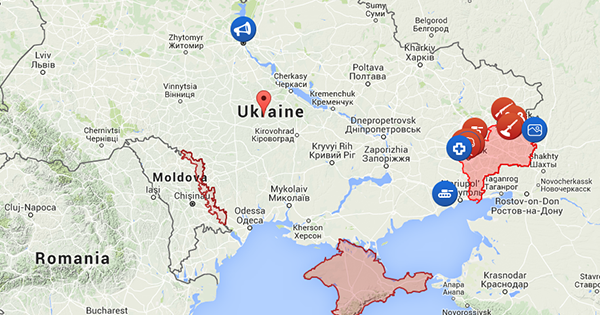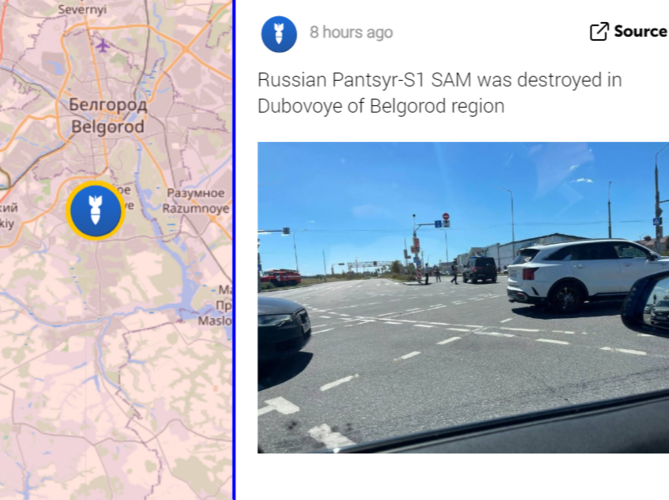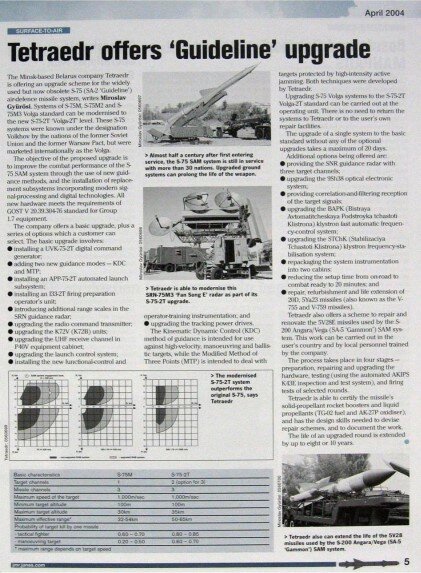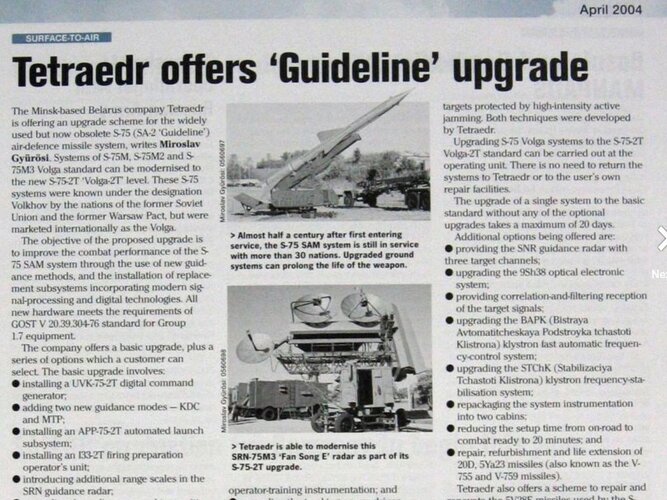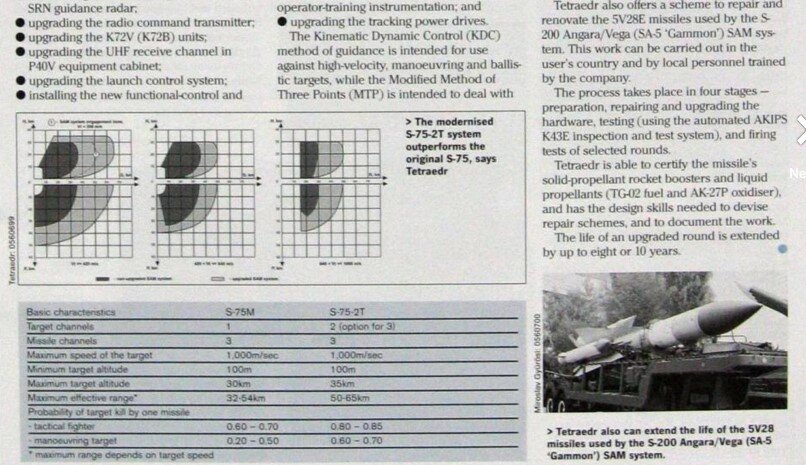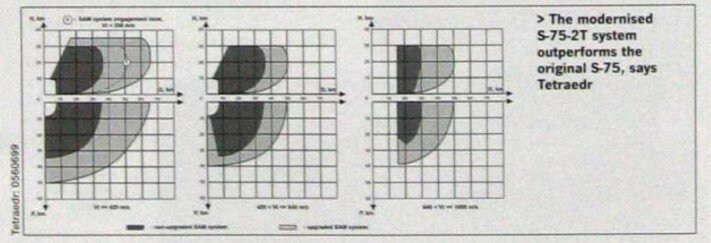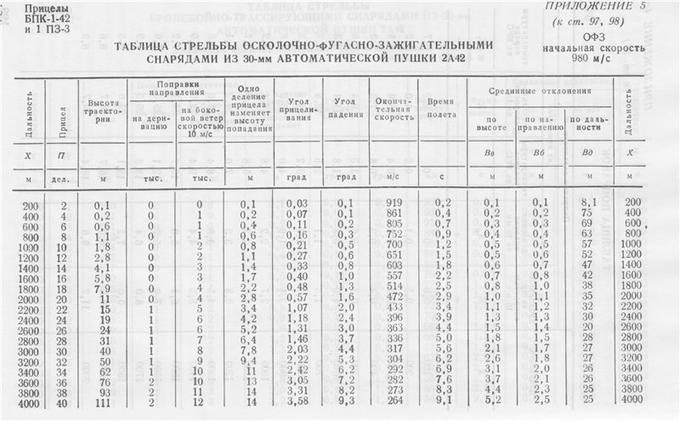panzerfeist1
ACCESS: Secret
https://vpk.name/news/369980_konstr...abotali_dlya_borby_s_mini-bespilotnikami.html Starting a thread for pantsir systems.
Valery Slugin - on the effectiveness of the use of the "Shell" in real combat operations, new hypersonic missiles for him and variants of military vehicles with increased ammunition
Anti-aircraft missile and cannon system (ZRPK) "Shell", created in the Design Bureau of Instrumentation named. Shipunova (part of the holdings of the High-Precision Complexes holding of the Rostec state corporation), defends the Russian air base Khmeimim and the port of Tartus in Syria, fights with American drones in Libya, ensures the safety of international forums and sports. TASS talked with the chief designer of the complex Valery Slugin about the effectiveness of the use of the "Shell" in real combat operations, new hypersonic missiles for him, as well as new versions of combat vehicles with increased ammunition.
- Recently, a new air threat has appeared in the form of small-speed small-sized drones. Can the "Shell" fight them?
- Unmanned aerial vehicles were originally one of the types of targets that the Carapace must fight against. At the time of the creation of the complex, these were quite large and high-speed targets of an airplane type. Then the drones became small-sized, with a small effective scattering area, flying at low speeds. The vulnerability of all radar systems is just work on such small low-speed targets. When they go at low speeds and heights against the background of strong reflections from the earth's surface, the target detection station becomes clogged. This is a very difficult problem, but the "Shell" copes with it.
I don’t see that other systems could fight such drones as, for example, a phantom type quadrocopter. This drone can be used as an information tool, however, on such a drone there is an opportunity to place a combat charge, and it will carry out a terrorist task. A recent example was in Saudi Arabia when a flock of small drones flew in. They caused such damage that immediately dipped the volume of oil production.
- What changes have been made to the "Shell" to deal with similar goals?
- We adapted location tools for the detection and accurate tracking of stealth targets. Our new missile does not have a homing head, only the striking part. If we already see the target of the radar station of the combat vehicle, we are guaranteed to undermine the warhead along the drone's path, and the field of fragments will cover it reliably.
I want to note that drones for the "Shell" - not the main goal. The "shell" is designed in such a way that it fights against MLRS missiles, mines, cruise missiles, tactical ballistic and hypersonic missiles.
- What missiles are currently in the arsenal of the complex?
- There are two missiles, they are fighting with a whole range of targets. One standard, another recently developed, it is hypersonic - its speed is 5 Machs and more. Speed is needed to quickly fly up to the target - this increases the rate of fire of the complex, because the firing channel is freed faster. In addition, you don’t need to put a lot of explosives into the warhead to disperse the fragments - the faster the speed of impact, the higher the efficiency of the fragments.
- Does a hypersonic missile have a homing head?
- Firstly, missiles with heads have a minus - they are, by definition, less speed. Secondly, missile heads are needed at long ranges, but absolutely not needed at the turn of the “Shell”, all the tasks here can be solved by the remote control system of the missile from the fighting vehicle.
- It was reported on the development of small-sized missiles for the "Shell". What is the status of these works now?
- So far, this is a research work that does not carry fundamental questions, unlike a hypersonic rocket, where you need to pierce a dense atmosphere in hypersound, where the steering wheels are lit. A small-sized missile does not require high speed, its main task is to be cheap. The Pantsir’s combat vehicle has a large ammunition load - 12 missiles and 1400 rounds to the cannon, so it can easily destroy about 20 targets or even more, but in the current state of air attack this may not be enough. Current missiles "Shell" hit 20-30 km, but a small-sized low-speed drone does not need to be shot down at such a range. Now we are striking such targets at a distance of 5-7 km, in the so-called near zone. Why then put so much gunpowder in a rocket, to put such powerful engines? It is economically feasible to make a small rocket.
In addition, we can supply four times more such missiles to the Shell. This will increase combat performance by increasing the number of targets that can be hit with a single ammunition
“Are these small-sized missiles installed in the standard shells of the Shell?”
- It is planned to do so and use the same management system. Small-sized missiles will have the same length as standard ones, but they are smaller in diameter - instead of one standard missile, a cartridge containing four ammunition will be inserted. On the machine itself, only intelligence will change.
- When can such missiles appear in the ammunition complex?
“I cannot answer this question yet, but the development, production and testing of new missiles will take, I think, more than three to four years.”
- Do you plan to create new cars based on the Pantsir complex?
- We plan to develop a support tool that will have even more ammunition. We have a combat vehicle, it has 12 missiles. But there is also a transport-loading vehicle, it also has ammunition, however, in order for it to become a combat vehicle, it is necessary to put it on a combat vehicle. On the other hand, it is possible to make a transport-loading vehicle transport-combat: put it in a simplified control system, target designation from the main vehicle, but enable this transport-combat vehicle to fire itself.
On such a machine, you can install twice as much ammunition - not 12, but, say, 24 missiles. If another half of the ammunition will be small-sized missiles, then there will already be 48 missiles on one side of such a launcher.
- What are the results of the use of the complex "Shell" in Syria?
- The specialists of the Aerospace Forces of the Russian Federation have an unequivocal opinion that the "Shell" has shown itself well in combat. This is actually the only complex in Russia that now has such experience of participating in hostilities.
- How many so far have drones shot down ZRPK "Shell"?
“About a hundred, maybe more.” This is taking into account Syria and other regions. In Syria itself there are two armor groups: the Russian one at the Khmeimim airbase and the group that is operated by the Syrian army.
- How difficult is it to hit artisanal drones of militants in Syria?
“I held these drones in my hands.” At first, the terrorists hung up to ten bombs on them, due to this the drones on the radar could be seen very well. Then they reduced the amount of ammunition to two and greatly reduced their speed. To learn how to beat such goals, I had to make some efforts. As I said above, the radar station of the complex was finalized, certain improvements were made to the rocket.
- The Israeli Ministry of Defense published a video of the defeat of the Syrian Shell. You studied this episode, why did they manage to destroy it?
- This "Shell" of the Syrian armed forces managed to hit eight targets, and it just did not have any rockets left. The combat crew left the car and stood nearby - waiting for a transport-loading car with new ammunition. One person from the combat crew, as seen in the video, ran - he apparently had a phone in the car. It was impossible to do so - it was necessary to immediately withdraw the fighting vehicle from the position after the ammunition was shot, immediately, then everything would be fine.
- "Shell" in the course of hostilities more often hits targets with a gun or rockets?
- Of course, more missiles. We try not to allow targets to the cannon firing zone. The nearest missile zone is about 1.5 km. If something slipped closer, then these goals are destroyed by cannons.
The gun is primarily a weapon of self-defense, for example, to protect the complex itself from the same drones. Also, a gun is a weapon of self-defense from a ground enemy. The "shell" can protect itself, for example, from an infantry fighting vehicle or a jihad mobile, and such use of guns was in Syria, it turned out to be effective
- Can rockets land targets "Shell" can hit?
- It’s written in our terms of reference, we hit the ground without question. It is difficult to bring down targets flying low above the surface of the earth in radar mode. But the “Shell” also implements a full-fledged optical guidance mode, which is insensitive to all these reflections from the surface - it doesn’t matter whether the target flies above the ground or, say, travels along the ground. Optics with a thermal imager clearly see the target on the ground. The “Shell” missile’s operating regime on ground targets is full.
- On tests, the "Shell" hit ground equipment with missiles?
- Amazed and amazes. And on the surface target, I think, the "Shell" will be able to shoot. If you put it on the shore, and even higher, then you can shoot ten kilometers on surface ships.
- At what stage of work on the next generation of the complex - “Shell-S1M”?
- Successfully tested, he confirmed all the main technical specifications. We have already proposed this project to a number of foreign customers, several potential buyers have already watched the complex.
- The Arctic "Shell" on a two-link tractor has more launchers, nine on each side, and is not armed with guns. Why?
- So ordered the Ministry of Defense of the Russian Federation. It would be much easier for us to put a standard module.
- Now many companies are moving towards increasing the caliber of automatic guns. For example, anti-aircraft self-propelled gun "Derivation" from the Central Research Institute "Petrel" uses a 57-mm gun. Is it planned to replace the 30-mm guns with the 57-mm ones on the Shell?
- An increase in caliber is necessary first of all to increase the range of destruction, but it is not necessary for the ZRPK "Shell". Its unique high-precision guns are effective in the "dead zone" of missiles, even for small targets. As a result, we have a continuous lesion zone from the maximum on the missile to zero. Thus, the replacement of the caliber of guns on the "Shell" is not planned.
Valery Slugin - on the effectiveness of the use of the "Shell" in real combat operations, new hypersonic missiles for him and variants of military vehicles with increased ammunition
Anti-aircraft missile and cannon system (ZRPK) "Shell", created in the Design Bureau of Instrumentation named. Shipunova (part of the holdings of the High-Precision Complexes holding of the Rostec state corporation), defends the Russian air base Khmeimim and the port of Tartus in Syria, fights with American drones in Libya, ensures the safety of international forums and sports. TASS talked with the chief designer of the complex Valery Slugin about the effectiveness of the use of the "Shell" in real combat operations, new hypersonic missiles for him, as well as new versions of combat vehicles with increased ammunition.
- Recently, a new air threat has appeared in the form of small-speed small-sized drones. Can the "Shell" fight them?
- Unmanned aerial vehicles were originally one of the types of targets that the Carapace must fight against. At the time of the creation of the complex, these were quite large and high-speed targets of an airplane type. Then the drones became small-sized, with a small effective scattering area, flying at low speeds. The vulnerability of all radar systems is just work on such small low-speed targets. When they go at low speeds and heights against the background of strong reflections from the earth's surface, the target detection station becomes clogged. This is a very difficult problem, but the "Shell" copes with it.
I don’t see that other systems could fight such drones as, for example, a phantom type quadrocopter. This drone can be used as an information tool, however, on such a drone there is an opportunity to place a combat charge, and it will carry out a terrorist task. A recent example was in Saudi Arabia when a flock of small drones flew in. They caused such damage that immediately dipped the volume of oil production.
- What changes have been made to the "Shell" to deal with similar goals?
- We adapted location tools for the detection and accurate tracking of stealth targets. Our new missile does not have a homing head, only the striking part. If we already see the target of the radar station of the combat vehicle, we are guaranteed to undermine the warhead along the drone's path, and the field of fragments will cover it reliably.
I want to note that drones for the "Shell" - not the main goal. The "shell" is designed in such a way that it fights against MLRS missiles, mines, cruise missiles, tactical ballistic and hypersonic missiles.
- What missiles are currently in the arsenal of the complex?
- There are two missiles, they are fighting with a whole range of targets. One standard, another recently developed, it is hypersonic - its speed is 5 Machs and more. Speed is needed to quickly fly up to the target - this increases the rate of fire of the complex, because the firing channel is freed faster. In addition, you don’t need to put a lot of explosives into the warhead to disperse the fragments - the faster the speed of impact, the higher the efficiency of the fragments.
- Does a hypersonic missile have a homing head?
- Firstly, missiles with heads have a minus - they are, by definition, less speed. Secondly, missile heads are needed at long ranges, but absolutely not needed at the turn of the “Shell”, all the tasks here can be solved by the remote control system of the missile from the fighting vehicle.
- It was reported on the development of small-sized missiles for the "Shell". What is the status of these works now?
- So far, this is a research work that does not carry fundamental questions, unlike a hypersonic rocket, where you need to pierce a dense atmosphere in hypersound, where the steering wheels are lit. A small-sized missile does not require high speed, its main task is to be cheap. The Pantsir’s combat vehicle has a large ammunition load - 12 missiles and 1400 rounds to the cannon, so it can easily destroy about 20 targets or even more, but in the current state of air attack this may not be enough. Current missiles "Shell" hit 20-30 km, but a small-sized low-speed drone does not need to be shot down at such a range. Now we are striking such targets at a distance of 5-7 km, in the so-called near zone. Why then put so much gunpowder in a rocket, to put such powerful engines? It is economically feasible to make a small rocket.
In addition, we can supply four times more such missiles to the Shell. This will increase combat performance by increasing the number of targets that can be hit with a single ammunition
“Are these small-sized missiles installed in the standard shells of the Shell?”
- It is planned to do so and use the same management system. Small-sized missiles will have the same length as standard ones, but they are smaller in diameter - instead of one standard missile, a cartridge containing four ammunition will be inserted. On the machine itself, only intelligence will change.
- When can such missiles appear in the ammunition complex?
“I cannot answer this question yet, but the development, production and testing of new missiles will take, I think, more than three to four years.”
- Do you plan to create new cars based on the Pantsir complex?
- We plan to develop a support tool that will have even more ammunition. We have a combat vehicle, it has 12 missiles. But there is also a transport-loading vehicle, it also has ammunition, however, in order for it to become a combat vehicle, it is necessary to put it on a combat vehicle. On the other hand, it is possible to make a transport-loading vehicle transport-combat: put it in a simplified control system, target designation from the main vehicle, but enable this transport-combat vehicle to fire itself.
On such a machine, you can install twice as much ammunition - not 12, but, say, 24 missiles. If another half of the ammunition will be small-sized missiles, then there will already be 48 missiles on one side of such a launcher.
- What are the results of the use of the complex "Shell" in Syria?
- The specialists of the Aerospace Forces of the Russian Federation have an unequivocal opinion that the "Shell" has shown itself well in combat. This is actually the only complex in Russia that now has such experience of participating in hostilities.
- How many so far have drones shot down ZRPK "Shell"?
“About a hundred, maybe more.” This is taking into account Syria and other regions. In Syria itself there are two armor groups: the Russian one at the Khmeimim airbase and the group that is operated by the Syrian army.
- How difficult is it to hit artisanal drones of militants in Syria?
“I held these drones in my hands.” At first, the terrorists hung up to ten bombs on them, due to this the drones on the radar could be seen very well. Then they reduced the amount of ammunition to two and greatly reduced their speed. To learn how to beat such goals, I had to make some efforts. As I said above, the radar station of the complex was finalized, certain improvements were made to the rocket.
- The Israeli Ministry of Defense published a video of the defeat of the Syrian Shell. You studied this episode, why did they manage to destroy it?
- This "Shell" of the Syrian armed forces managed to hit eight targets, and it just did not have any rockets left. The combat crew left the car and stood nearby - waiting for a transport-loading car with new ammunition. One person from the combat crew, as seen in the video, ran - he apparently had a phone in the car. It was impossible to do so - it was necessary to immediately withdraw the fighting vehicle from the position after the ammunition was shot, immediately, then everything would be fine.
- "Shell" in the course of hostilities more often hits targets with a gun or rockets?
- Of course, more missiles. We try not to allow targets to the cannon firing zone. The nearest missile zone is about 1.5 km. If something slipped closer, then these goals are destroyed by cannons.
The gun is primarily a weapon of self-defense, for example, to protect the complex itself from the same drones. Also, a gun is a weapon of self-defense from a ground enemy. The "shell" can protect itself, for example, from an infantry fighting vehicle or a jihad mobile, and such use of guns was in Syria, it turned out to be effective
- Can rockets land targets "Shell" can hit?
- It’s written in our terms of reference, we hit the ground without question. It is difficult to bring down targets flying low above the surface of the earth in radar mode. But the “Shell” also implements a full-fledged optical guidance mode, which is insensitive to all these reflections from the surface - it doesn’t matter whether the target flies above the ground or, say, travels along the ground. Optics with a thermal imager clearly see the target on the ground. The “Shell” missile’s operating regime on ground targets is full.
- On tests, the "Shell" hit ground equipment with missiles?
- Amazed and amazes. And on the surface target, I think, the "Shell" will be able to shoot. If you put it on the shore, and even higher, then you can shoot ten kilometers on surface ships.
- At what stage of work on the next generation of the complex - “Shell-S1M”?
- Successfully tested, he confirmed all the main technical specifications. We have already proposed this project to a number of foreign customers, several potential buyers have already watched the complex.
- The Arctic "Shell" on a two-link tractor has more launchers, nine on each side, and is not armed with guns. Why?
- So ordered the Ministry of Defense of the Russian Federation. It would be much easier for us to put a standard module.
- Now many companies are moving towards increasing the caliber of automatic guns. For example, anti-aircraft self-propelled gun "Derivation" from the Central Research Institute "Petrel" uses a 57-mm gun. Is it planned to replace the 30-mm guns with the 57-mm ones on the Shell?
- An increase in caliber is necessary first of all to increase the range of destruction, but it is not necessary for the ZRPK "Shell". Its unique high-precision guns are effective in the "dead zone" of missiles, even for small targets. As a result, we have a continuous lesion zone from the maximum on the missile to zero. Thus, the replacement of the caliber of guns on the "Shell" is not planned.


